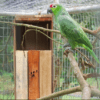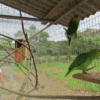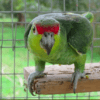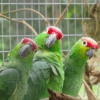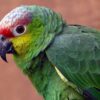Lilacine Amazon
Also known as:
Ecuadorian Red-lored Amazon
Also known as:
Ecuadorian Red-lored Amazon
DID YOU KNOW?
The Lilacine Amazon was once considered conspecific with the Red-lored Amazon (Amazona autumnalis).

Amazona

lilacina
Size:
34 cm (13.2 in)
Weight:
About 350 g.
Subspecies including nominate:
one
Colour Adult:
Both adults in general green, with black edging to feathers of crown to mantle and breast; red on forehead reaching over eye in a line; green crown to nape, becoming mauve/blue towards tips and edged with black. Cheeks yellow/green. Secondary feathers 1-5 red at bases, the remainder green; green tail, with side feathers red at bases. Eye ring pale yellow. Beak grey/black.
Colour Juvenile:
Duller than adults; red and mauve head markings less evident. Beak grey, paler at base of upper mandible. Eye brown.
Call:
Wide variety of sounds, some high-pitched, trilling; other calls loud, metallic and scolding; rippling and short notes also heard.
Content Sources:
BirdLife International
Cornell Lab of Ornithology/Birds of the World
Lilacine Amazon EAZA Best Practice Guidelines
Lexicon of Parrots, Thomas Arndt.
Parrots of the World, Forshaw, 2006.
Vanished and Vanishing Parrots, Forshaw, 2017.
Parrots in Aviculture, Low, 1992.
Captive Status:
Uncommon
Longevity:
More than 35 yrs.
Housing:
Aviary or suspended cage with a minimum length 3 m (9.8 ft).
Diet:
Fruit such as: apple, pear, orange, banana, cactus fruits, pomegranate, forming about 30 % of the diet; fresh vegetables such as: carrot, celery, green peas, beans, fresh corn, green leaves; spray millet and limited mixed seed, cooked beans and pulses, complete kibble.
Enrichment:
Enjoys bathing so provide overhead misters or shallow water bowls; foot toys, destructible (non-toxic) toys, non-destructible (non-toxic plastic) toys, food-finder toys, preening toys, different texture and size hanging perch toys, fir, pine, willow or elder branches, push-and-pull toys (sliding up and down), vegetable tanned leather toys.
Nest Box Size:
Vertical box, 12″ x 12″ x 24″ (30.5 cm x 30.5 cm x 61 cm).
Clutch Size:
1-2
Fledging Age:
8-9 weeks
Hatch Weight:
—
Peak Weight:
—
Weaning Weight:
—
World Population:
1,000-2,499 mature individuals, decreasing.
IUCN Red List Status:
Critically Endangered
CITES Listing:
Appendix II
As conspecific with Amazona autumnalis
Threat Summary:
Occurs widely but very sparsely on the Pacific slope of Ecuador. Overall the population is believed to have declined by 18-35% over a decade in the Puerto Hondo Mangrove area due to ongoing habitat destruction and high hunting pressure.
Range:
Confined to western Ecuador, south to El Oro; may occur in SW Colombia.
Habitat:
Found in both coastal mangrove and dry tropical forest. Also can probably be seen in a variety of forest habitats, dry scrub and agricultural areas.
Wild Diet:
Eats fruits, buds, leaf shoots and seeds in the upper canopy. Fruit of muyuyo Corida lutea, Minquartia fruits, mangoes Mangifera indica and Spanish plums Spondias purpurea. At lower elevations coffee beans and cultivated fruits are also taken.
Ecology and Behaviour:
Nomadic; birds move from rainforest in breeding season to open areas in winter. Found in loose flocks or in pairs, are gregarious when feeding (often found with macaws). Roosts in mangroves and flies to dry forest every day to feed.
Clutch and Egg Size:
1-2 eggs
Breeding Season:
Reported to be January-March.
Related Links:
—
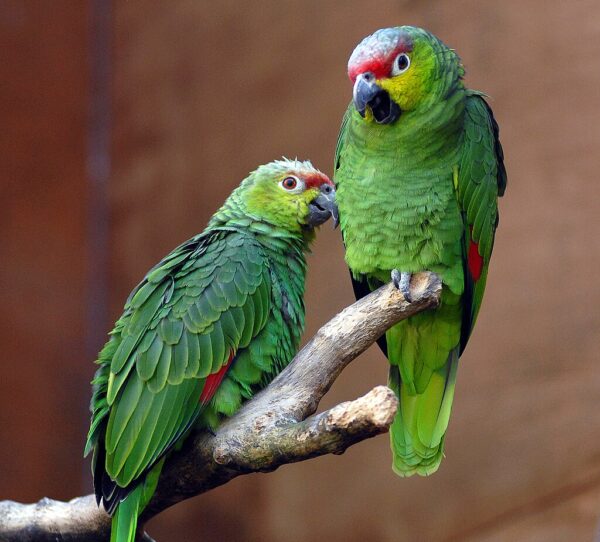
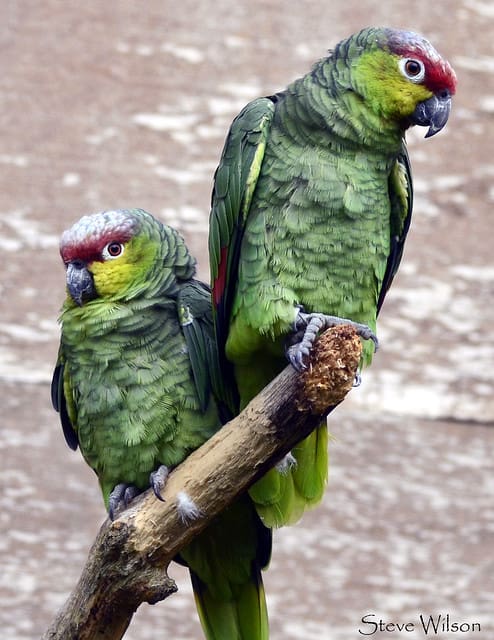
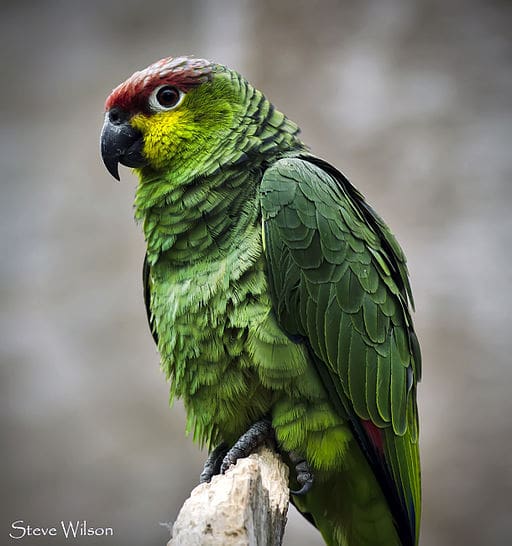
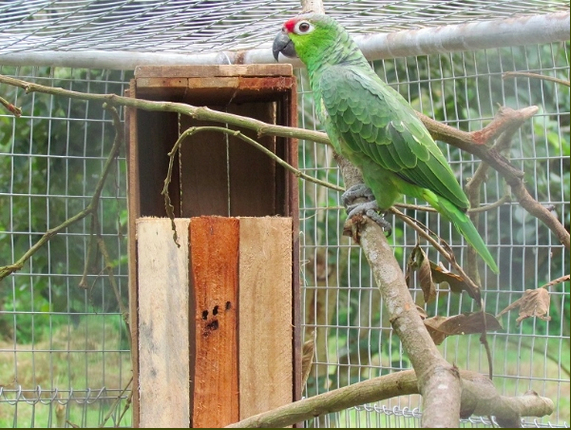
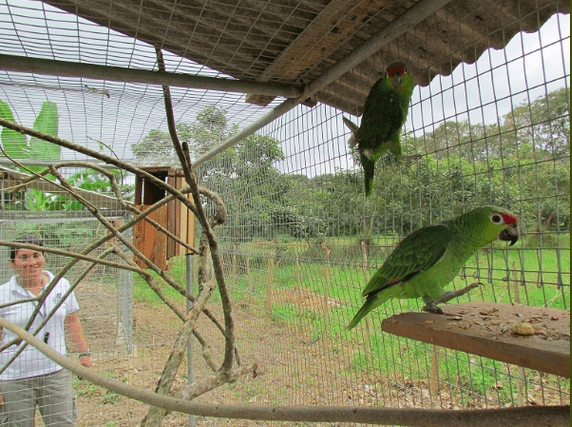
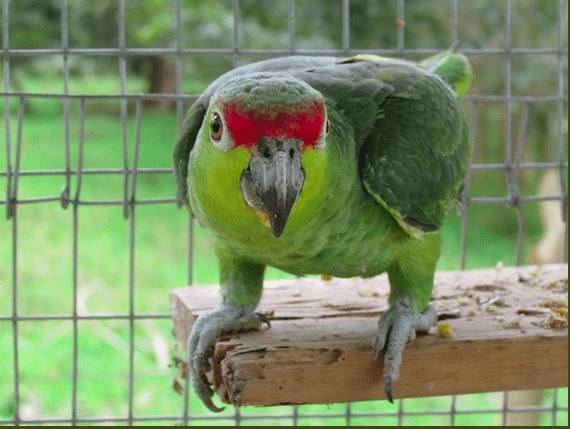
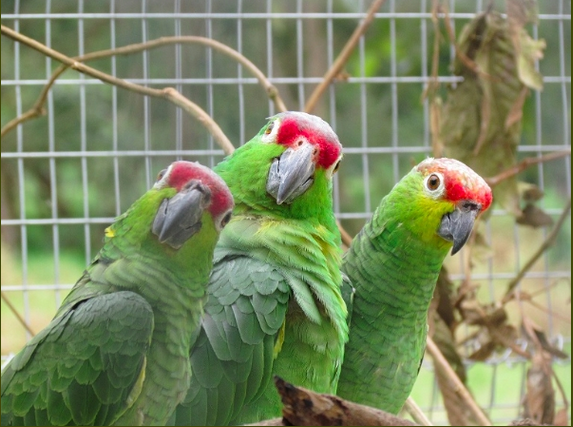
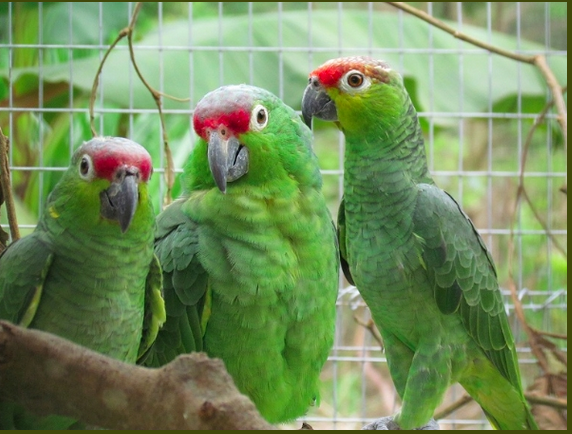

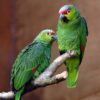
![© Steve Wilson [CC BY-SA 2.0] via Flickr Lilacine Amazons perch on a branch](https://parrots.org/wp-content/uploads/2023/01/wpt_Lilacine-Amazon_1986-11-100x100.jpg)
![© Steve Wilson [CC BY 2.0] via Wikimedia Commons A Lilacine Amazon perches on a branch at Chester Zoo, UK](https://parrots.org/wp-content/uploads/2023/01/wpt_Lilacine-Amazon_1986-7-100x100.jpg)
